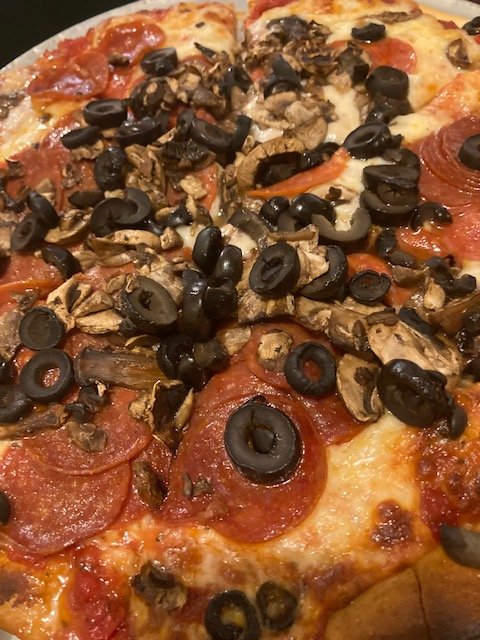
- calendar_month May 11, 2024
- folder Local news
Hidden restaurant fees have been plaguing with a heightened intensity since restaurants re-opened in the wake of the global pandemic. But relief may be on the horizon thanks to a new law that goes into effect across California on July 1. Aimed at eliminating hidden fees in ticket sales, the state attorney general has clarified it also applies to those obnoxiously unexpected fees commonly tacked on to bills at area restaurants. It’s a modern form of deception known as drip pricing. Yet, restaurants clinging to drip pricing as a life raft in an ocean of financial uncertainty worry that the new law could spell the end. In their eyes, upfront pricing will only drive customers away.
How Drip Pricing Puts Restaurants at Odds with Their Customers
Photo credit: Envato
a new law will ban drip pricing in the Golden State. Restaurants have relied heavily on drip pricing as a means of raising prices without upsetting customers. Not immediately anyway. Rather than increase the prices of menu items, owners tack restaurant service fees on to the bottom of receipts at the end of a meal.
Restaurants struggling to make ends meet and recoup much-needed revenue lost during pandemic-era shutdowns see service fees as the price of modern dining. However, customers frequently see drip pricing as a form of deception.
Some customers don’t even notice these additional charges, more often than not a percentage of the subtotal. Others question the charges but ultimately agree. Some patrons have even successfully argued the charges and had them removed from their bills.
Notable Examples of Drip Pricing in Local LA Restaurants
Photo credit: Envato
In the summer of 2023, a class-action lawsuit was filed against popular Italian restaurant Jon & Vinny’s over their utilization of drip pricing. The restaurant had instituted an 18% service fee on every check but never clarified that this was not synonymous with a tip. In the wake of the lawsuit, Jon & Vinny’s added language to their check stating the service fee was used to “facilitate a higher living base wage” for its staff. Obviously, the hidden fee remained.
More recently, downtown French restaurant Perch came under fire for adding a “security fee” to its checks. The 4.5% charge is tacked on to every bill with a message stating that it is to “ensure the safety for all staff and guests.” While Perch is a rooftop establishment, it’s unclear what threat warrants the extra security. Seagulls?
Some restaurants are even defiant about these hidden fees, perhaps feeling burdened by the high cost of operating in California’s food industry. Pijja Palace, recently mentioned in our surprisingly controversial list of best pizza in LA, tacks on a 19% service charge with a disclaimer: “I put this under the wing section, so you can fly your *ss out of here if you don’t like it.” To their credit, Pizza Palace staff often state that this 19% service fee covers tips as well.
Restaurant Service Fees Have No Standard
Photo credit: Envato
But this highlights a major problem with drip pricing. It means different things to different people. For some establishments, it replaces the need to tip. For others, it’s in addition to a suggested tip. Some say it helps them provide benefits to staff. Others chalk it up to the rising cost of food.
Since the passing of new minimum wage laws, some restaurant owners spitefully proclaim that voters brought drip pricing on themselves. Many of these restaurants charge a service fee regardless of whether patrons are dining in or taking out.
But starting on July 1, restaurants will no longer be able to hide behind drip pricing. Most patrons see this as a good thing. With upfront pricing, they can quickly and realistically determine whether a restaurant is worth the total before they get their bills.
Finding Opportunity in the End of Drip Pricing
Photo credit: Envato
Some restaurant owners fear that upfront pricing spells the end of the restaurant experience, claiming that the average patron won’t want to pay inflated prices if they’re frontloaded onto menus. For these restaurants, deception has already become an integrated part of their business models. They’re banking on selling clients an experience they probably can’t afford.
Yet, drip pricing could actually be a golden opportunity for the management of local restaurants. It demands that owners cut costs by re-evaluating their business models and investing more in long-term staff by creating a rewarding work environment. You’ll already find the rare restaurant with low turnover, sustained by the respectful treatment of their staff. Others see workers as disposable commodities. The latter will have a harder time surviving in an already ultra-competitive market.
The real challenge will be for hardworking restaurant staff to find establishments that prioritize them as long-term assets. As we see menu items increase in price, likely quite dramatically after July 1, the quality of a restaurant’s management team will become more evident. In the meantime, restaurants will still have a couple of months to create a business model that doesn’t rely on hidden costs and service fees.
Popular Articles you may enjoy: https://janie.jhagents.com/blog
Professionals: https://janie.jhagents.com/vendors
I am just a call or text away if you need anything.




